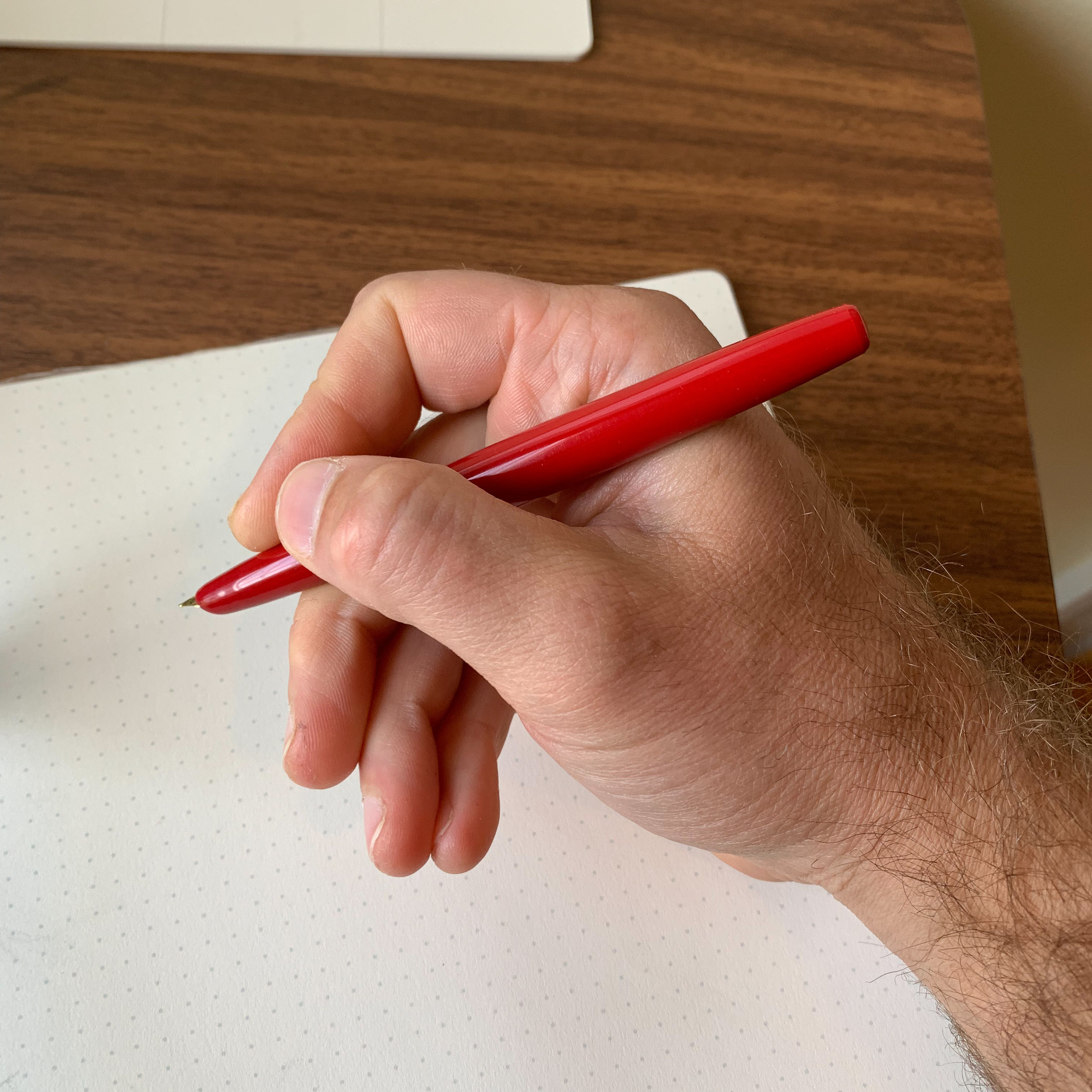Since Esterbrook’s “reboot", most of the attention has focused on the Estie, the Company’s first release following its acquisition by Kenro. Currently, Esterbrook only has two pens on the market: the Estie (which comes in standard and oversize versions) and the Phaeton, which I’ll look at today. In my opinion, this somewhat singular focus has served Esterbrook well, and the Estie, which I consider a well-designed, appropriately priced “daily workhorse”-type pen, has received largely positive reviews. Kudos to Esterbrook for pacing themselves and letting their reputation build around the Estie and expanding their offerings by gradually releasing new versions of that pen, as opposed to flooding the market with multiple designs and seeing what sticks. It shows confidence in their strategy.
The Esterbrook Phaeton comes in four colors: Signal Red, Mineral Blue, Spruce Green, and Midnight Black. Gold-plated trim only.
Which brings me to the Phaeton (also listed as the “Phaeton 300R”), marketed as a re-release of a vintage hooded-nib Esterbrook, the Phaeton 300, a pen you don’t hear much about save in vintage collector circles. Though I understand Esterbrook’s desire to expand the line across a wider range of price points - particularly the need to offer something in the sub-$100 price bracket - I question whether this current version of the Phaeton was the right move, mainly because this pen faces steep competition from lower-priced alternatives.
I love the practicality of this type of converter - it works better than any Indian-style converter I have used, but man does this thing stink!
For starters, many people have pointed out that the Phaeton bears a striking resemblance to much less expensive offerings sold by Indian fountain pen companies such as Kanwrite. Assuming there is some relationship there, however, I do think that it’s unfair to write the Phaeton off as a pure “rebadge” of a stock pen purchased abroad. There clearly have been some design modifications to the cap and clip, and the nibs and feeds on the Phaetons have plainly undergone more rigorous quality control than you would find on a typical $15 Indian fountain pen. Moreover, it’s no secret that Esterbrook pens are made by contract manufacturers, presumably incorporating stock parts that go into other pens sold by different companies. Esterbrook doesn’t own their own factory, and many other companies do the same thing. The end result for the Phaeton is a good daily writer with a cool vintage vibe, especially if you like hooded-nib fountain pens, as I do. At the end of the day, however, the question is still whether Esterbrook has done enough to this pen to justify the $85 MSRP/$68 street price. That’s where I have my doubts.
I love hooded nibs! Even on relatively inexpensive pens, they seem to write well, and are very practical for those times when you’d prefer to use a pen that doesn’t scream “Fountain Pen!”, such as in a meeting.
Before I talk further about the price-value proposition, a few comments on the Phaeton’s specs and usability. I had no issues whatsoever inking up the Phaeton and getting it writing out of the box. The syringe-filling converter works well, and makes it easy to flush the pen, though you have to deal with the extremely stinky plastic that Indian pen companies use to manufacture these types of converters. (If you’ve ever used a Noodler’s pen, you’ll know exactly what I’m talking about.) The nib writes a standard medium-fine line, which is the only nib size available, and while the pen has some tooth, I found it pleasant to use. In terms of size, the Phaeton will remind you of classic vintage pens such as the Parker 51, Parker Super 21, Aurora 88, and, yes, the original Esterbrook Phaeton. Like those pens, the metal cap is a friction-fit clutch design, which also posts easily. In short, from a pure usability standpoint, the Phaeton is a nice pen that will serve you well as a daily writer.
Overall Takeaways and Where To Buy
The Phaeton offers a retro vibe at a not-objectively-unreasonable price point, especially if you wait for a sale or coupon code. The issue I have with this pen is the increasing level of quality competition at the same or lower price, and I’m not sure that I can recommend the Phaeton at $68 over, say, a TWSBI 580 at the same price, a PenBBS 456 vacuum filler priced around $40, or a PenBBS 308 cartridge converter filler or 309 piston filler at an even lower price point. If you want a hooded nib pen, the KACO Retro costs less than $20.
I am glad to see Esterbrook experimenting with lower priced offerings than the $150+ Estie. That said, I don’t necessarily see the Phaeton gaining as much traction, given the relatively high price point as compared to pens of similar - and some would say better - quality. One reason why you may still want to consider the Phaeton, though, is the widespread availability at retail in the U.S. If you’re uncomfortable purchasing pens from eBay or Amazon sellers - a mainstay at this price point - the Phaeton can be acquired from pen retailers such as Pen Chalet or Vanness Pens, both of whom will certainly stand behind the product if you have a problem (as will Esterbrook).
Disclaimer: I received the Esterbrook Phaeton featured in this review from Esterbrook, free of charge, for review purposes. Many thanks to Esterbrook for making this review possible! This post contains affiliate links.

